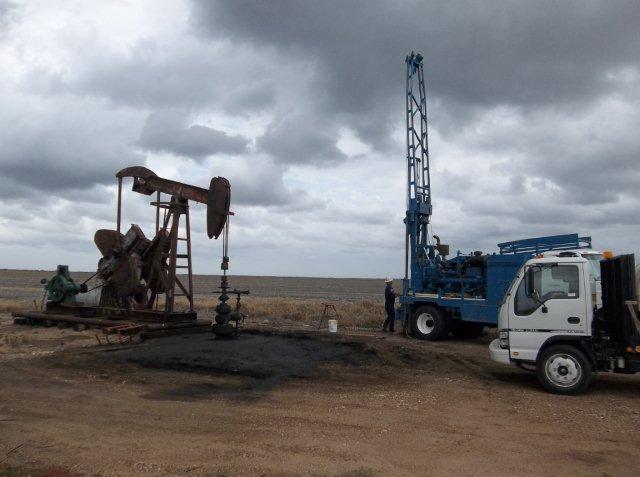
Types of environmental contamination are a growing concern as land development increases at historic and active oil and gas exploration and production sites. This surge raises the risk of environmental and human health hazards due to chemical releases into the environment. Extensive research is underway to prevent soil, groundwater, and surface water contamination. In areas with frequent oil and gas development, air, water, and soil resources may become contaminated with oil and gas wastes and by-products.
Check out our oil and Gas consulting services!
Sources for Environmental Contamination:
- Historic releases from oilfield and gas field exploration and production sites also pose a threat of environmental liabilities to property owners, investors, and developers who wish to develop these types of sites.
- Waste and/or petroleum transport- Accidental petroleum spills and releases frequently occur due to transportation accidents that cause spills, oil and gas exploration and production releases, and releases from petroleum storage tank system overfills and tank system, piping, and dispensers.
- Well failure at production sites can create major problems for drillers and for the people and agriculture who live in the area of these wells. Poor design, cracked casing, or flawed cement work can cause dangerous well blowouts, and toxic leaks from malfunctioning wells can occur even after the well stops producing.
- Wastewater and waste solids storage systems that aren’t properly designed, constructed, monitored, and eventually closed and cleaned up are also a contamination risk.
Types of Environmental Contamination:
Hydraulic fracturing chemicals
Hydraulic fracturing fluid consists of roughly 99% water. The remaining 1% typically consists of 3 to 12 chemical additives that improve the effectiveness of the fluid during hydraulic fracturing operations. Some of these additives are toxic, and because a single hydraulically fractured well may use several million gallons of fluid, even a small leak may pose a risk to local groundwater supplies.
Drilling fluids
Drilling Fluids are used to lubricate drills, remove rock chips, and maintain pressure in the well during drilling, usually consist mostly of mud and water with smaller amounts of minerals and chemicals that change the physical properties of the fluid to improve its function. Unauthorized use of toxic drilling fluid additives while drilling through freshwater aquifers may also contaminate groundwater.
Methane
Methane is a naturally occurring, flammable gas that is non-toxic but explosive at high concentrations. It is also a potent greenhouse gas. Methane is the main component of natural gas but it is also produced by microbes in sediments and wetlands, so methane found in groundwater may come from nearby oil and gas operations, natural microbes or both. Methane can also enter groundwater due to natural leakage from coal or gas-rich rocks. Determining the contributions of these different methane sources is a crucial step in assessing the environmental impacts of oil and gas production.
Oil and produced water
Oily and salty water that coexists with oil and gas in rock formations is called “produced water” when it is extracted along with oil and gas. Oil and saltwater leaks and spills are of greater risk to surface soil, subsurface soil surface water, and groundwater. These releases of produced water can have long lasting damaging effects on plants by causing “kill zones where plant life cannot survive, much less recover, due to high chlorides. Extreme illness and even death may occur to aquatic life, plants, animals, and humans who become exposed to oil & gas E&P petroleum or produced water chemicals and wastes.
Stakeholders include oil & gas site property owners, operators, oil and gas companies, financial institutions, and others.
Services for these suite include:
- Environmental Due diligence (Phase I and Phase II Environmental Site Assessments)
- Ecological Impact Screening Level Risk Assessment
- Spill response, Regulatory Agency Corrective Action and Reporting
